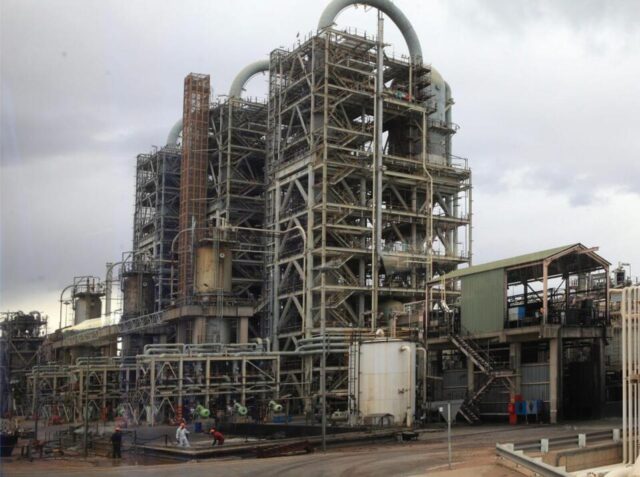The CEO of PetroSA says the 2025 deadline to start producing gas to power is realistic because of already established partnerships.
SANDISIWE Ncemane, the CEO of the Petroleum Oil and Gas South Africa (PetroSA), is confident that its aggressive drive for strategic partners to collaborate with in unfolding a mix of gas to power is the right approach.
This comes as PetroSA is taking over the aviation fuel supply dumped by BP Petroleum and ensuring a consistent supply of diesel for power utility Eskom’s turbines and the general market.
Ncemane said the petroleum entity had been aggressive from the third quarter of last year to grow the volumes of product in the market while focusing on the long-term view of sustainable financial stability and being able to navigate the challenges stemming from geo-political factors.
‘’Across our projects, we use partnerships as far as possible to also ensure adequate funding. For instance, in the offshore gas project, which is 40 kilometres off the coast, where our gas is treated then taken onshore for refinement, we have a vessel and a helicopter to servicing the team of 80 people, so logistically, we are in close proximity with the projects,’’ Ncemane said.
She said PetroSA was on point to deliver between 150 to 180 megawatts of electricity from its gas to power, which was currently being spearheaded to provide an early power generation solution. This leveraged the commercialisation of PetroSA’s tail gas for power generation for Eskom or an alternative off-taker.
An off-taker is an entity which contracts via power purchase agreements to purchase power generated by producers for a defined time period at a defined price.
Ncemane said two off-takers, in Eskom through the grid and municipalities, had already been identified.
The proposed project enabled the recovery of otherwise stranded tail gas, with the potential to improve the reserve margin for the national grid. It was anticipated that gas supply would be via the FA platform and associated offshore infrastructure for tail gas commercialisation.
The FA Platform is a modern, web-based software platform for investment management.
The 180MW to be generated will assist in ensuring that PetroSA provides sustainable energy solutions through various strategic partnerships, she said.
PetroSA had been required to submit environmental impact assessments for electricity production through the Mossel Bay plant, which was mothballed in 2020, but now forms part of PetroSA’s gas-fired power plant plans to fight load shedding. It is already part of the processes to produce 110 MW.
PetroSA chief operations officer Sesakho Magadla said in an earlier interview: ‘’The emissions to produce from 150MW to 180MW should not be all that different from when the same plants produced 110MW. We already have the existing infrastructure and capacity. The project can definitely finance itself. The cost recovery will come from the tariff that will be charged.’’
Looking ahead, Ncemane said the 2025 deadline to start producing the gas to power was realistic because of the already established partnerships.
‘’We are using indigenous gas according to the principles of the integrated resource plan. Gas to power is one of the solutions instrumental in the security of energy. We are currently engaging with our partners to find ways of stabilising the security of supply.
“So not only have we got access to the gas, and from the volumes we’re talking, to where we could have at least three years’ provision to drive that particular solution, ‘’ Ncemane pointed out.
The utility in January went to the market for technical partners and is currently evaluating a potential partner with a view to making an appointment.
Ncemane said from the last reserves audits, PetroSA still had capacity to the tune of about 45 to 50 million barrels that could be used to drive power generation.
‘’You are aware Eskom also has their own open-cycle gas turbine in Mossel Bay as well as Cape Town, and Gourikwa in Mossel Bay, in particular, is adjacent to our facilities. So even with the availability of gas, there’s an opportunity for them to convert that particular facility – to have a hybrid solution.’’
AVIATION FUEL
In aviation, PetroSA is also considering various opportunities relating to the supply of aviation fuel at various airports within South Africa.
PetroSA ventured into supplying aviation fuel to all customers, including commercial airlines, as one of the means to diversify its customer base and to ensure sustainability.
Ncemane said the entity’s new challenge, taking over the aviation fuel supply industry, was also already well within its realms because the processes of producing jet fuel was close at hand from the manufacture of paraffin, a closely related product.
‘’We are taking the expertise we already had and using it to face new challenges. The refinery at Mossel Bay was already producing petrol diesel and paraffin. Paraffin is close to jet fuel. It’s close to what we have already been doing,’’ Ncemane said.
“PetroSA’s long-term strategy really starts to talk to the period 2027 onwards, with gas among the critical feedstocks, not only in reinstating the refinery but also in terms of contribution to power generation, as well as stimulating various industries with the provision of natural gas,” she said.
Ncemane said that though appointed in November last year as the Airports Company of South Africa’s provider for jet fuel, with an initial start at the George and East London Airports, PetroSA had by April been able to transition into an efficient supplier with an eye out of rolling out its offerings further afield, including the King Shaka and OR Tambo international airports.
‘’We are building relations with airlines, looking at how systems work. We are really excited about our role,’’ Ncemane said.
– BUSINESS REPORT








